Salar de Uyuni en Bolivia: 10 cosas que debes saber
Publicado el 17 déc. 2024
Con sus paisajes impresionantes, el Salar de Uyuni en Bolivia, el desierto de sal más grande del mundo, es una parada imprescindible durante un viaje por Sudamérica. Extensiones de sal hasta donde alcanza la vista, bordeadas por volcanes y bañadas por lagos de agua salada cuyo color naranja recuerda a un atardecer, y noches estrelladas muy lejos de las luces de nuestra civilización... Antes de partir a Bolivia, para descubrir el Salar de Uyuni, descubre 10 cosas imprescindibles que debes saber sobre este lugar mítico.
#1 El desierto de sal más grande del mundo
El Salar de Uyuni, la mayor extensión de sal del mundo, está situado en el suroeste de Bolivia, a igual distancia de las fronteras chilena y argentina, en el corazón de la cordillera de los Andes. Situado a 3650 metros de altitud, se extiende sobre unos 10500 km² y mide más precisamente 150 km por 100. Verdadero desierto de extensión salina, el sitio alterna capas de sal y arcilla sobre un grosor de unos 40 cm. Su origen se remonta a la prehistoria, hace unos 14000 años, cuando en este lugar se encontraba el lago Tauca que, evaporándose con el tiempo, dio origen a los salares de Uyuni y Copaisa así como a los lagos Poopo y Uru Uru.
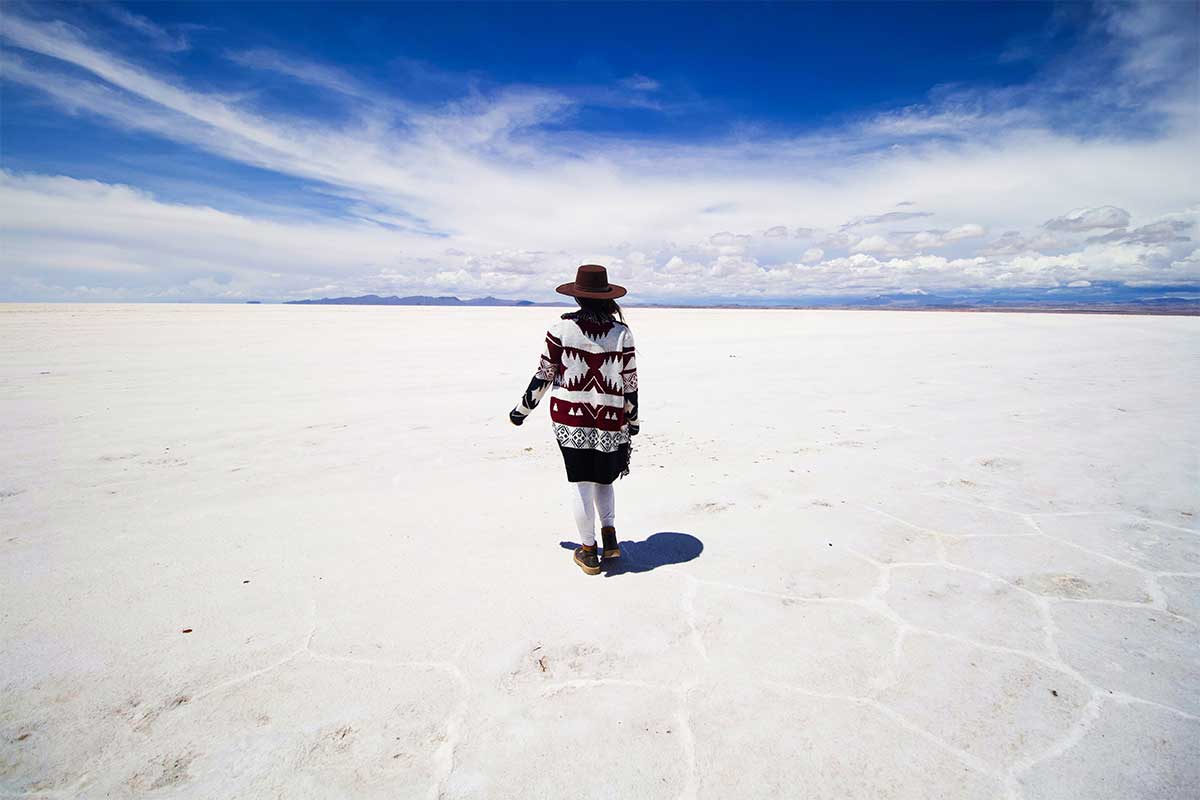
#2 La mayor reserva de litio del mundo
El Salar de Uyuni, por su tamaño, dispone de la mayor reserva de litio del mundo. El litio se utiliza como componente principal para pilas y baterías eléctricas, lo que lo convierte en un recurso muy explotable para el país. El gobierno boliviano es consciente de sus riquezas, que no dejan indiferentes a algunas multinacionales…
#3 Cuándo visitar el Salar de Uyuni en Bolivia
Por su situación en el corazón de la cordillera de los Andes y su altitud de 3650 m, el Salar de Uyuni es un sitio bastante ventoso, más bien soleado, pero la visita al sitio varía totalmente en función de las estaciones. Durante la temporada de lluvias, de diciembre a marzo, el suelo completamente plano puede rápidamente cubrirse con unos veinte centímetros de agua, haciendo inaccesibles algunos islotes pero dando una visión totalmente irreal del lugar, el reflejo del agua en el Salar hace desaparecer la línea del horizonte. Durante la temporada seca, de abril a diciembre, los días son soleados y las noches claras, propicias para la observación de un espléndido cielo estrellado.

#4 La fauna y la flora del Salar de Uyuni
Recorriendo el Sur Lipez, entras en la Reserva Nacional de Fauna Andina Eduardo Avaroa donde tendrás la oportunidad de observar nada menos que 3 especies de flamencos rosados (incluidos los flamencos de James, de pico amarillo), zorros, viscachas (pequeños roedores parecidos a conejos) y sobre todo llamas, tan características de Sudamérica. En cuanto a la vegetación, los islotes están cubiertos de cactus a veces milenarios que pueden alcanzar una decena de metros de altura.
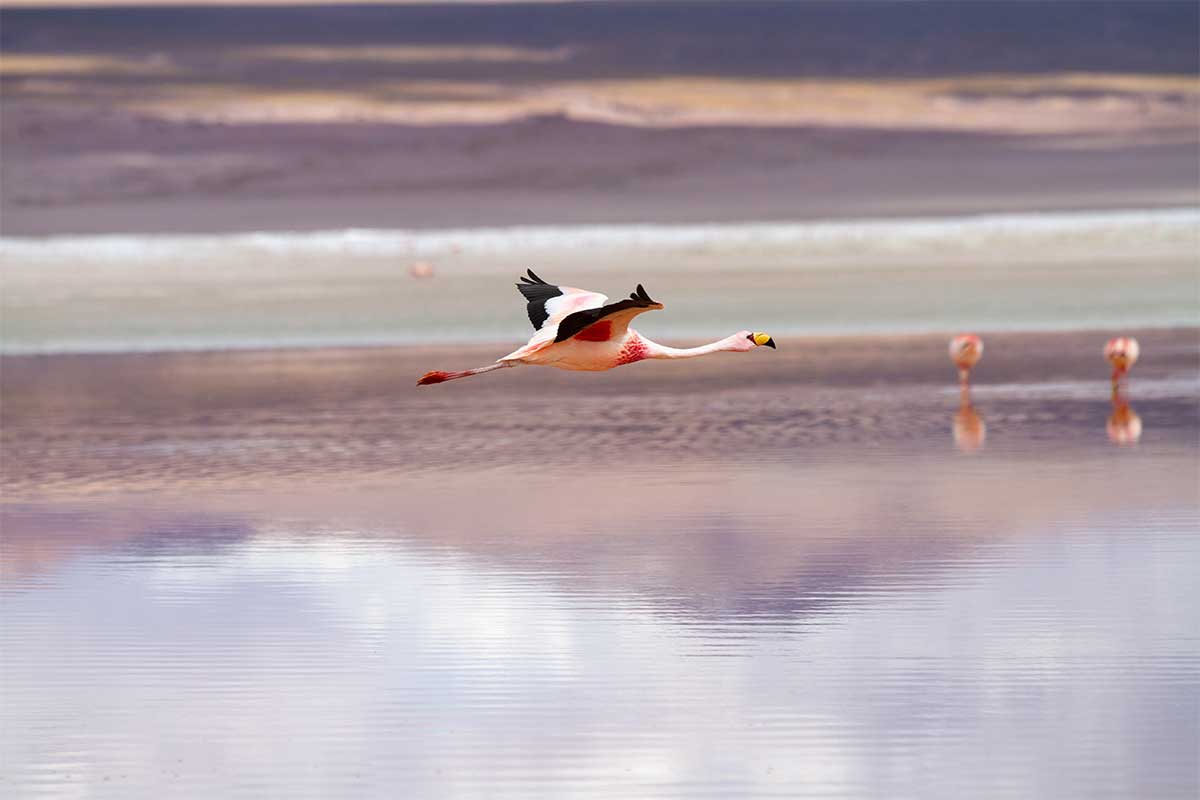
(c) Elizabeth Gottwald – Unsplash
#5 Visita guiada del Salar
Al llegar al sitio, tendrás que elegir una agencia local para hacer el recorrido por el salar, que puede durar según tus deseos de 1 a 4 días. Saldrás entonces en 4x4 desde las ciudades de Uyuni o Tupiza, más al sur, para recorrer la provincia del sur Lipez y descubrir el Salar.
- Infórmate bien sobre los detalles del servicio, especialmente en términos de alojamiento. Según la época, las temperaturas pueden llegar hasta -20°, así que sé previsor para evitar arruinar tu visita.
- Haz todas las preguntas necesarias para el buen desarrollo del viaje: sobre el conductor, el número de personas, la comida, y asegúrate de tener la cantidad de agua necesaria.
- Dedica una suma razonable para tu excursión, te alegrarás y tus recuerdos serán mucho más memorables.
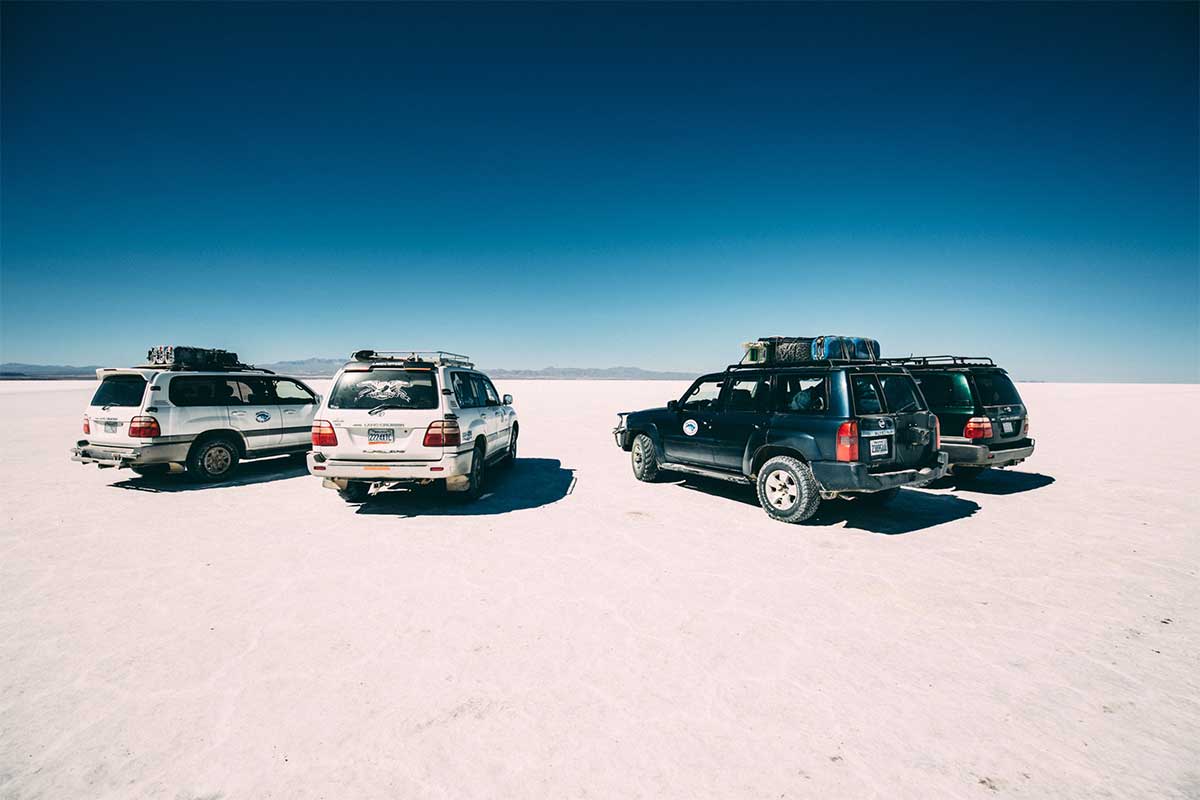
#6 Lagunas de todos los colores y los géiseres del sur Lipez
Uno de los imprescindibles del sitio, sin duda, es la Laguna Colorada (4278 m de altitud), al sur de Bolivia. La vista es simplemente impresionante. Este lago salado de color rojo, debido a los pigmentos de ciertas algas, toma colores increíbles! Es impresionante, sobre todo porque es el terreno favorito de los flamencos rosados, por cientos… Laguna Blanca y la Laguna Verde, al pie de los volcanes Juriques y Licancabur en la frontera con Chile. También recorrerás la “ruta de las joyas” que bordea las lagunas Honda, laguna Honda o la Laguna Hedionda, todas más bellas unas que otras. Otra curiosidad de la naturaleza: los géiseres del sur Lipez, que te permitirán disfrutar de un baño en las fuentes de agua caliente cercanas. ¡Desconexión y convivencia garantizadas!
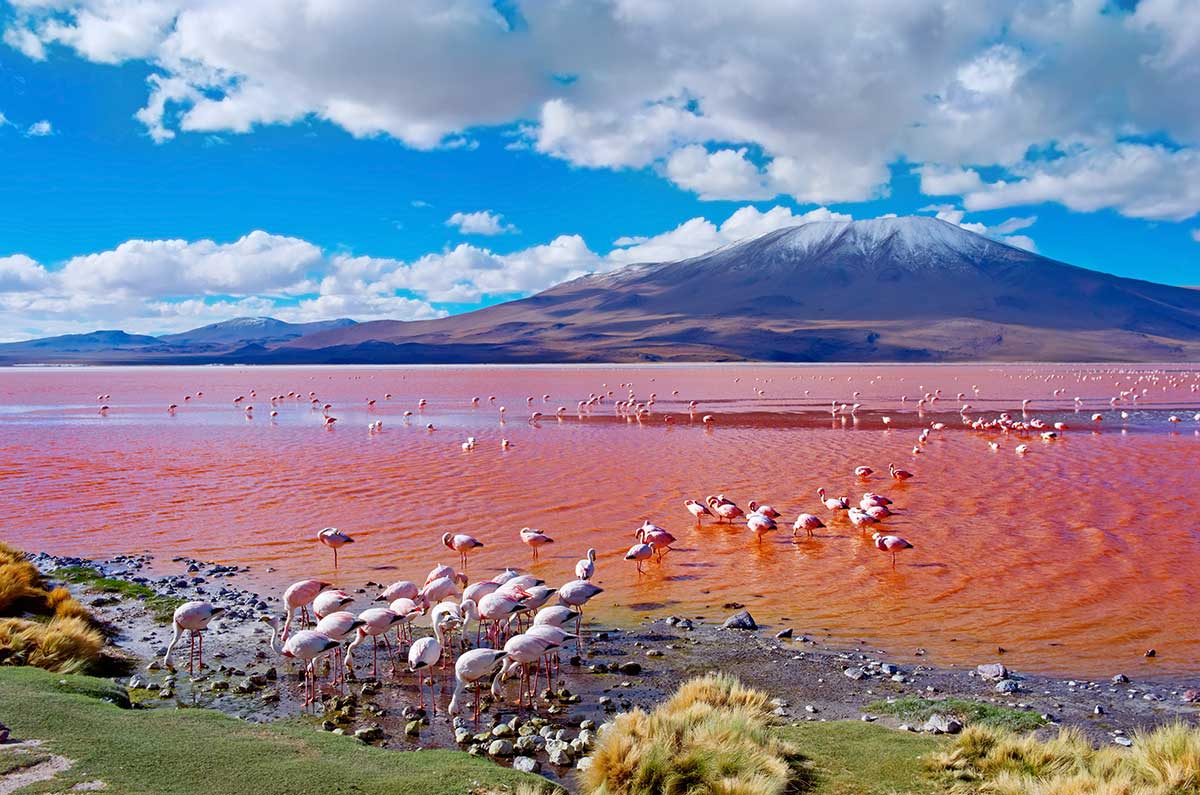
#7 Colchani, pueblo de la sal
Aunque el diminuto pueblo no presenta mucho interés, la población local solo puede inspirar respeto. Parece perdido en esta zona desértica, muy poco poblada, los habitantes viven de la explotación de la sal en condiciones difíciles y a cambio de un salario escaso. Los hoteles de sal en los que probablemente harás escala están construidos a partir de ladrillos elaborados en el pueblo: del suelo al techo, todo está hecho de sal, ¡mobiliario incluido!
#8 Cementerio de trenes
El tiempo parece haberse detenido en el cementerio de trenes de Uyuni. Carcazas de locomotoras se amontonan en este lugar tan sorprendente... Datando del principio del siglo XX, estos trenes fueron abandonados tras el fracaso de un gran proyecto de transporte ferroviario con los países limítrofes. Los vientos frecuentes y sobre todo salados rápidamente acabaron con los vehículos, que no son más que carcazas presas de la corrosión. ¡Para ver!
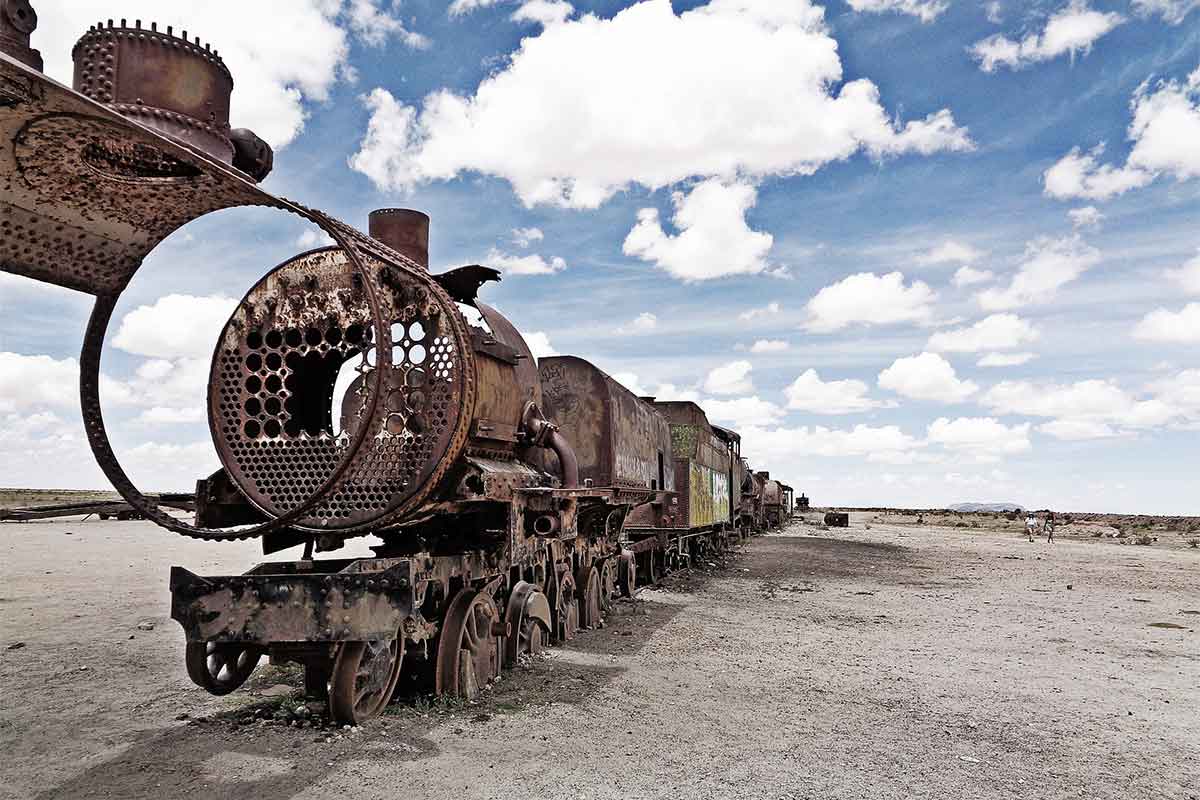
#9 La leyenda del Salar
El origen del Salar proviene del secado del lago Tauca, que data de la prehistoria, y que habría formado este vasto desierto de sal. Esta tesis puede parecer demasiado terrenal, por lo que los locales a veces comparten su teoría, mucho más poética. De hecho, la leyenda cuenta que el desierto, bordeado por numerosos volcanes, cuenta entre ellos al Tunupa, considerado el único volcán... ¡femenino! Al nacer su pequeño volcán, todos los de los alrededores insistieron y protestaron para reclamar la paternidad. Los Dioses, molestos por esta rivalidad, decidieron inmovilizar todos estos volcanes. La pena de Tunupa fue entonces tan grande que la sal de sus lágrimas inundó los alrededores y formó el actual desierto de sal. ¡Una hermosa historia!
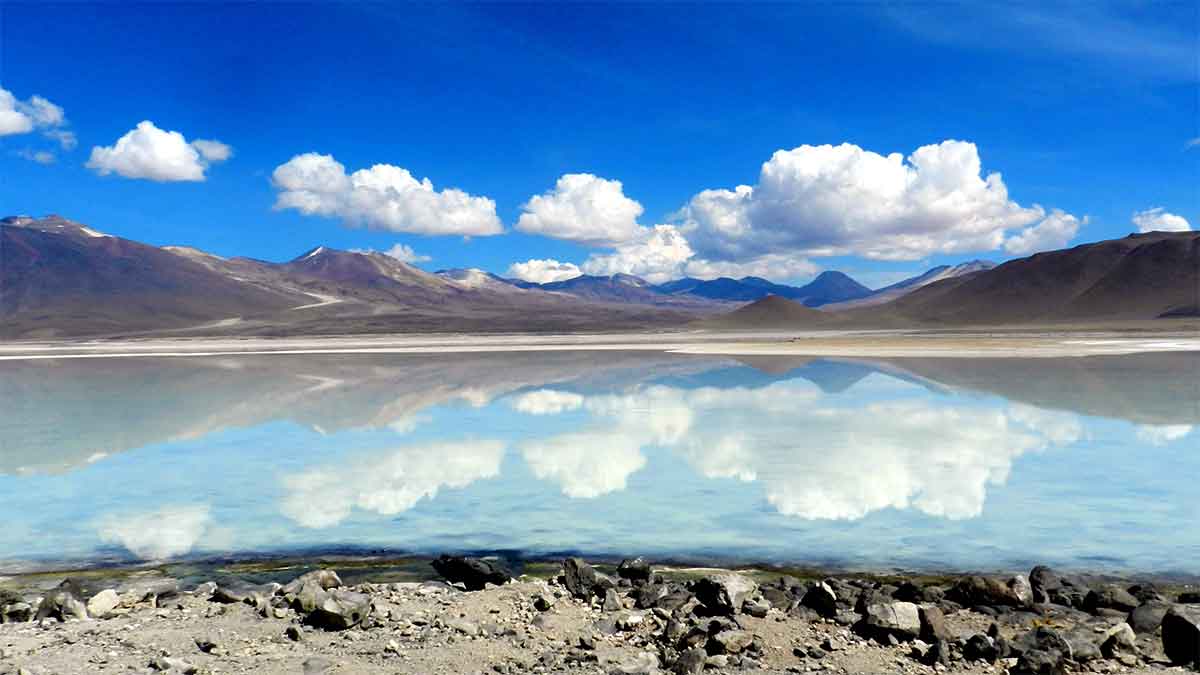
#10 Qué llevar en una excursión al Salar de Uyuni
Prepara un buen equipo antes de aventurarte en el Salar.
- Por supuesto, se requieren ropa de abrigo: guantes, calcetines, jerséis gruesos, mallas y una buena chaqueta, lo más ligera y cálida posible.
- No olvidar: crema solar de alta protección y gafas de sol de buena calidad. La luminosidad y el efecto espejo pueden ser muy nocivos para los ojos, no disfrutarías del espectáculo.
- Un bidón de agua de 5 litros será necesario para poder tener agua potable durante los días del circuito.
- Por último, parece indispensable llevar una buena cámara de fotos. No te arrepentirás de tu inversión.
Por último, no dudes en pedir a una agencia local en Bolivia que te organice un viaje de unos días durante tu próximo viaje a Bolivia. Porque este lugar es verdaderamente mágico y singular, verdadero patrimonio de nuestro planeta. Y sobre todo, no olvides respetar los lugares, y como dirían los bolivianos, la Pachamama, ¡nuestra Madre Tierra!
(c) streetflash – shutterstock.com
Un sitio de
Personaliza tus viajes con Quotatrip y recibe ofertas a medida directamente en tu bandeja de entrada.
Descubrir un país